I'm trying to show my 2D data on a 3D space.
Here is my code below:
import numpy as np
import matplotlib.pyplot as plt
i = 60
n = 1000
r = 3.8
eps = 0.7
y = np.ones((n, i))
# random numbers on the first row of array x
np.random.seed(1)
x = np.ones((n+1, i))
x[0, :] = np.random.random(i)
def logistic(r, x):
return r * x * (1 - x)
present_indi = np.arange(i)
next_indi = (present_indi + 1) % i
prev_indi = (present_indi - 1) % i
for n in range(1000):
y[n, :] = logistic(r, x[n, :])
x[n+1, :] = (1-eps)*y[n, present_indi] + 0.5*eps*(y[n, prev_indi] + y[n, next_indi])
#print(x)
# the above logic generates a 2D array 'x'. with i columns and n rows.
fig, ax = plt.subplots()
for i in range(60):
for n in range(1000):
if n>=900:
ax.plot(i,x[n,i],'*k',ms=0.9)
plt.xlabel('i')
plt.ylabel('x')
plt.title('test')
plt.show()
The above code perfectly displays i and x graph. I have plotted all the elements of 1st column of X, then all elements of second column, then the third and so on....., using the nested for loop logic (refer to the code)
Now what I need to do is, extend the plotting to 3D, i.e use Xaxis = i, Yaxis= n, Zaxis= array 'x'
I want to plot something like this:

I know I have to use mplot3D But doing the following won't give me any result:
fig = plt.figure()
ax = fig.add_subplot(111, projection='3d')
for i in range(60):
for n in range(1000):
if n>=900:
ax.plot_wireframe(i,n,x[n,i],rstride=1,cstride=1)

